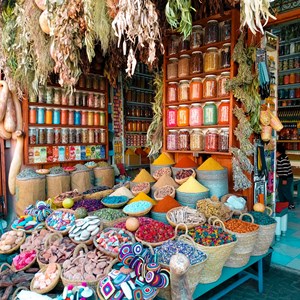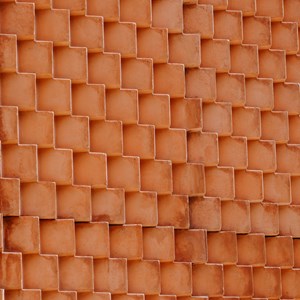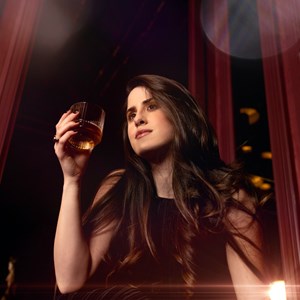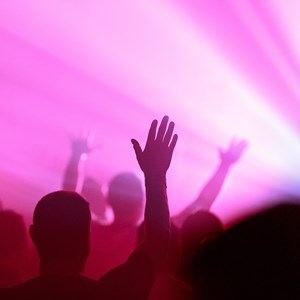

A city steeped in medieval allure, Marrakesh is a tapestry of myths, drama, and the enigma that entraps all who enter its ochre-hued embrace. Step inside, and you'll journey back through time into a world largely preserved in historical chronicles. With its maze-like Medina, the sensory overload of the bustling souks, the theatrical spectacle at Jemaa el-Fna square, and the towering Atlas Mountains serving as a dramatic backdrop, Marrakesh indisputably reigns as Morocco's most dazzling gem.
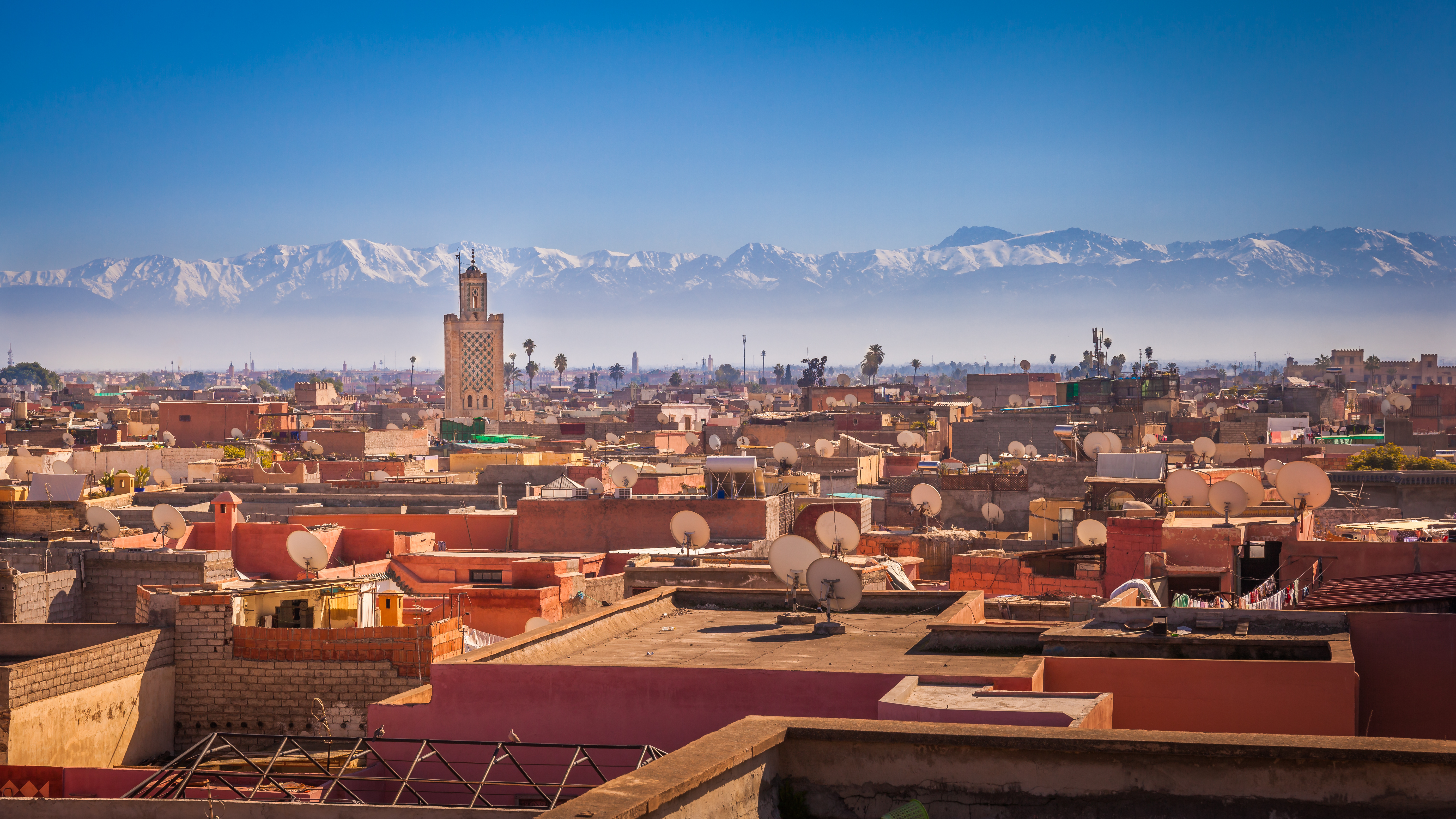 Maurizio De Mattei/Shutterstock.com
Maurizio De Mattei/Shutterstock.com
The City
On 8th September 2023, Morocco experienced a catastrophic 6.8-magnitude earthquake. The quake's origin was a mere 70 km southwest of Marrakesh, within the towering peaks of the High Atlas Mountains. Marking the most potent seismic event in central Morocco in over a century, this earthquake stands as the country's most lethal since 1960. Such seismic events are rare occurrences in this part of the world.
Marrakesh, often rendered as Marrakech in French, served as the jewel of Morocco's four imperial cities and is the core of the Marrakesh-Safi administrative region. Populated by Berber agriculturalists since ancient times, Marrakesh came into its own in 1070, under the auspices of Emir Abu Bakr ibn Umar. He founded it as the primary city of the Almoravid Dynasty, which laid down the urban structure that would define Marrakesh for generations. Today, the city presents a tapestry of contrast: the millennia-old Medina juxtaposes sharply against the Ville Nouvelle, a product of French colonial modernism.
Jemaa el-Fna, the pulsing epicentre of daily life in Marrakesh, undergoes a captivating transformation each evening. As dusk falls, the square fills with an array of culinary vendors offering delectable local fares. The air is saturated with the sights and sounds of snake charmers, impassioned storytellers, and myriad entertainers that evoke an almost medieval atmosphere. North of this bustling square lies a cluster of religious edifices and bustling marketplaces, while the south is adorned with regal palaces and landmarks.
In stark contrast, the Ville Nouvelle offers a more structured and calm ambiance, divided into the Gueliz and Hivernage districts. This area houses modern civic structures, international lodgings, and a diverse range of eateries and bars akin to a contemporary European metropolis.
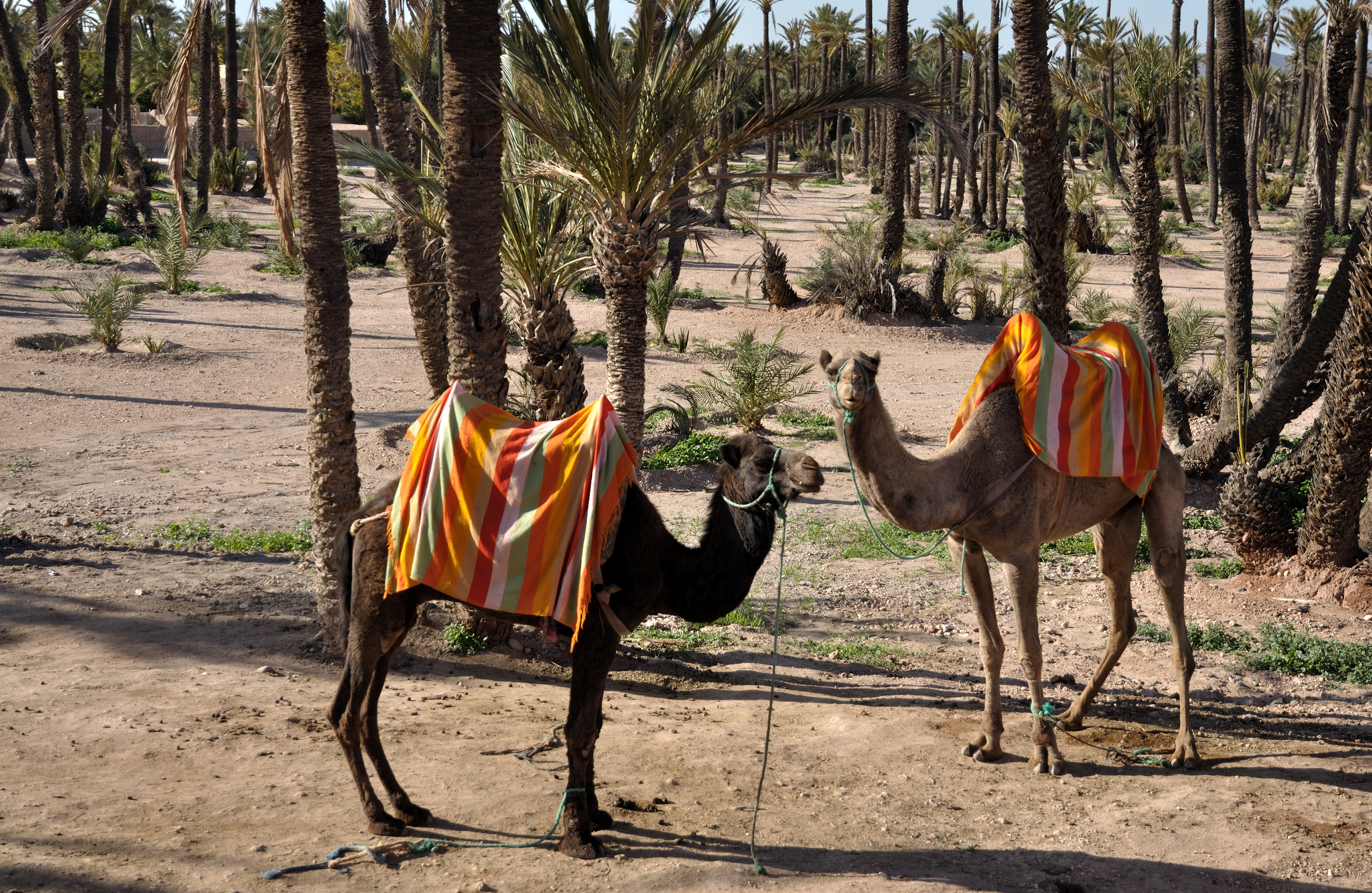 Philip Lange/Shutterstock.com
Philip Lange/Shutterstock.com
Do & See
The city is split into two dramatically different areas, each a testament to a distinct period in Moroccan history. First, there's the ancient Medina, a labyrinthine quarter established almost a millennium ago by the Almoravids. Then, in stark contrast, is the Ville Nouvelle, born out of early 20th-century French colonial ambitions and modernist ideals. But it's the Medina — particularly its bustling central square, Jemaa el-Fna — that truly kindles the imagination.
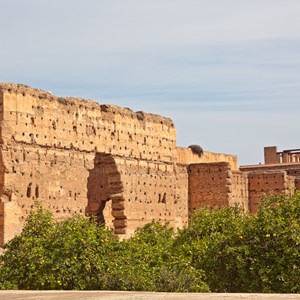 OPIS Zagreb / Shutterstock.com
OPIS Zagreb / Shutterstock.com
El Badi Palace
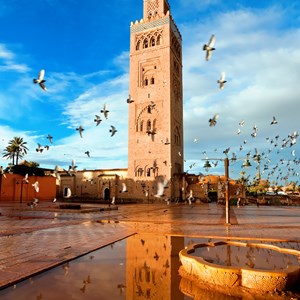 Migel / Shutterstock.com
Migel / Shutterstock.com
Koutoubia Mosque & Minaret
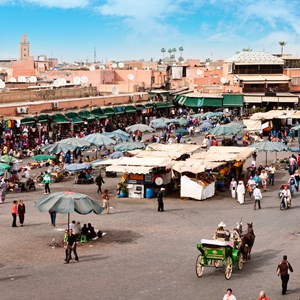 Lucky Business/Shutterstock.com
Lucky Business/Shutterstock.com
Jemaa el-Fna
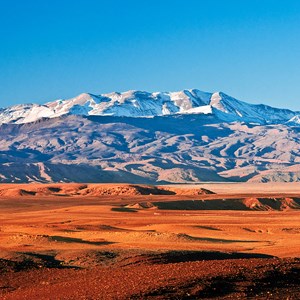 Seqoya / Shutterstock.com
Seqoya / Shutterstock.com
Atlas Mountains & Three Valleys Day Trip
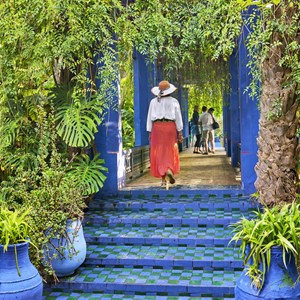 John_Walker/Shutterstock.com
John_Walker/Shutterstock.com
Majorelle Garden
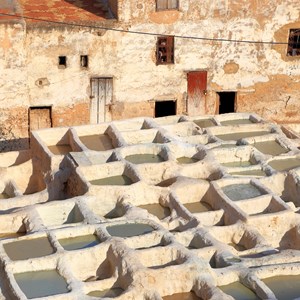 Inu / Shutterstock.com
Inu / Shutterstock.com
Bab Debbagh Tanneries
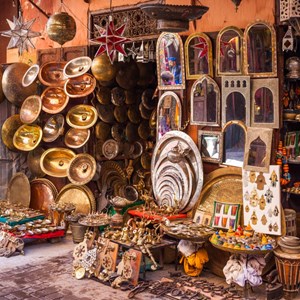 Maurizio De Mattei / Shutterstock.com
Maurizio De Mattei / Shutterstock.com
Souks
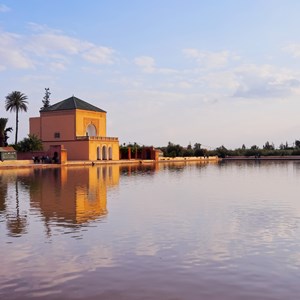 Karol Kozlowski / Shutterstock.com
Karol Kozlowski / Shutterstock.com
Menara Gardens
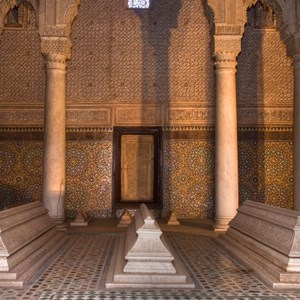 Stephane Bidouze / Shutterstock.com
Stephane Bidouze / Shutterstock.com
Saadian Tombs
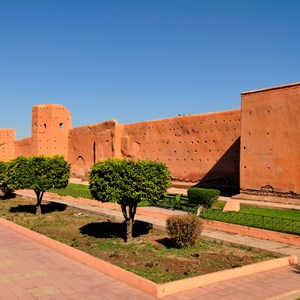 stefano spezi / Shutterstock.com
stefano spezi / Shutterstock.com
City Walls
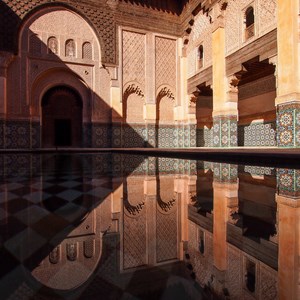 Nicram Sabod / Shutterstock.com
Nicram Sabod / Shutterstock.com
Ben Youssef Madrasa
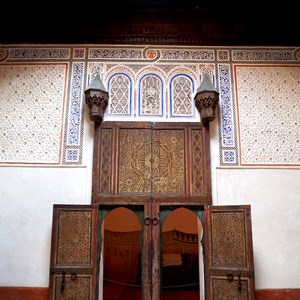 Philip Reeve/Shutterstock.com
Philip Reeve/Shutterstock.com
House of Photography
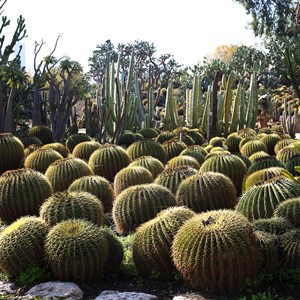 Keren Noya/Shutterstock.com
Keren Noya/Shutterstock.com
Cactus Thiemann
 Poznyakov/Shutterstock.com
Poznyakov/Shutterstock.com
Oasiria-Amizmiz Waterpark
 VectorLifestylepic / Shutterstock.com
VectorLifestylepic / Shutterstock.com
Royal Golf Marrakech
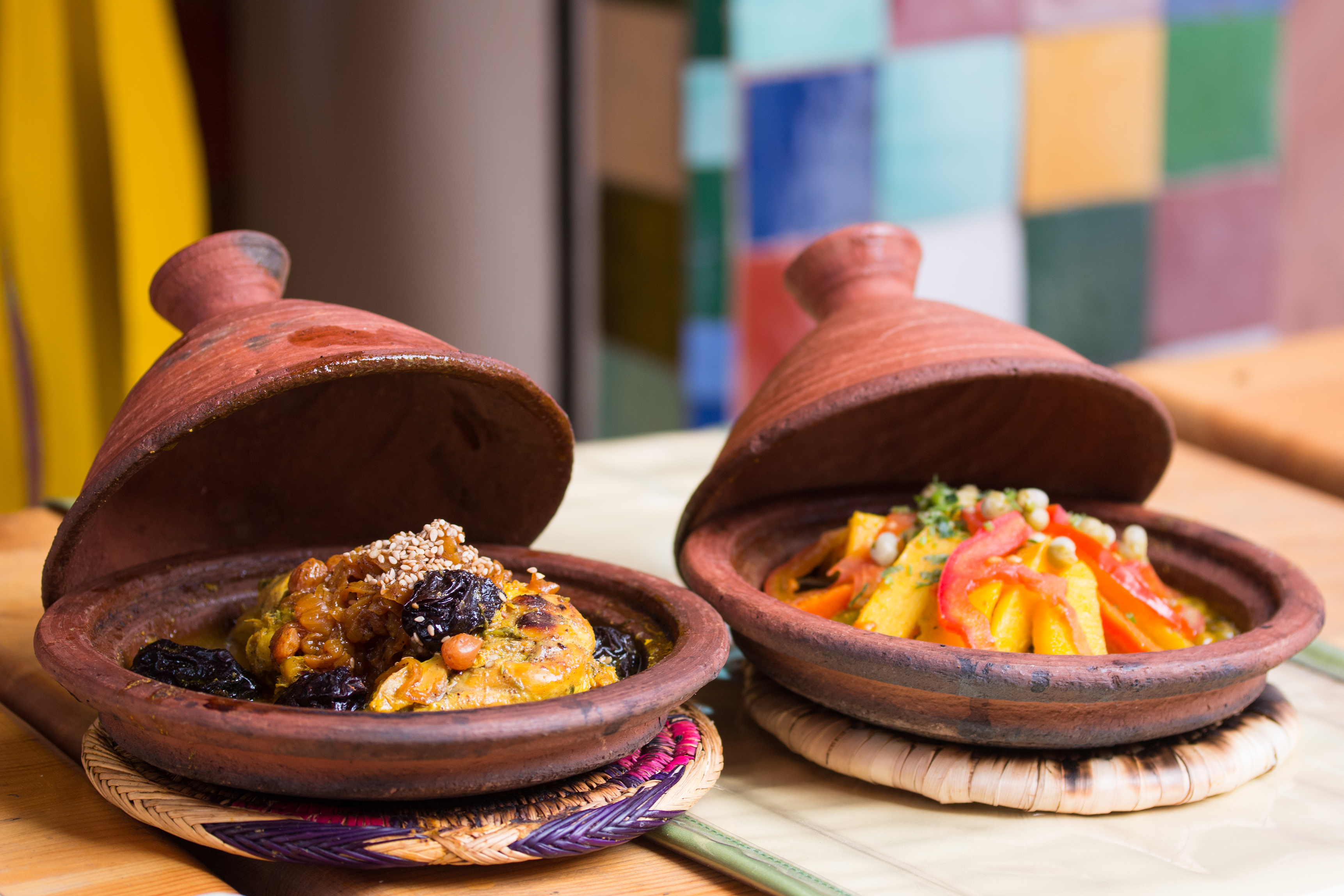 Sylvia Kania/Shutterstock.com
Sylvia Kania/Shutterstock.com
Dining
Moroccan cuisine, in general, consists of the staples of meat ― mainly chicken and lamb ― a wide variety of fruits and vegetables, and couscous. The most renowned Moroccan dish is the tajine, a slowly cooked stew of meat, vegetables, fruit and nuts. Another famous dish is pastilla, which is composed of either chicken or pigeon between layers of pastry.
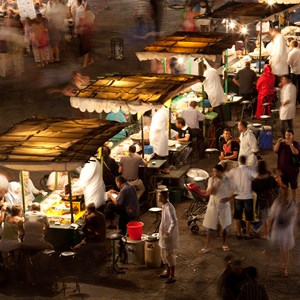 Alex Andrei / Shutterstock.com
Alex Andrei / Shutterstock.com
Jemaa el-Fna Food Stalls
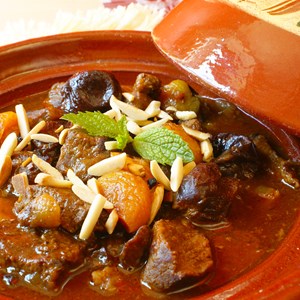 Elzbieta Sekowska / Shutterstock.com
Elzbieta Sekowska / Shutterstock.com
Dar Marjana
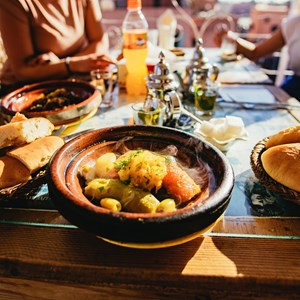 sebastiancaptures/Shutterstock.com
sebastiancaptures/Shutterstock.com
Ksar El Hamra
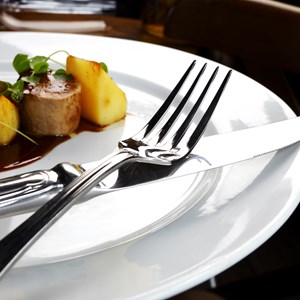 Luiz Rocha / Shutterstock.com
Luiz Rocha / Shutterstock.com
Casa Lalla
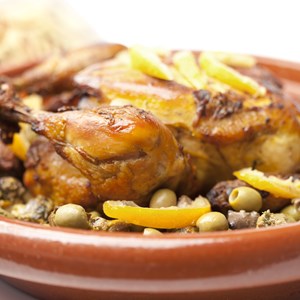 picturepartners / Shutterstock.com
picturepartners / Shutterstock.com
Dar Moha
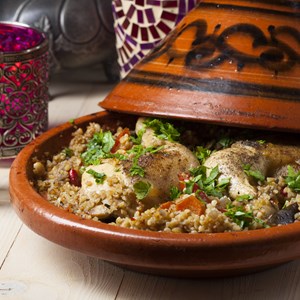 Bernd Juergens / Shutterstock.com
Bernd Juergens / Shutterstock.com
Le Foundouk
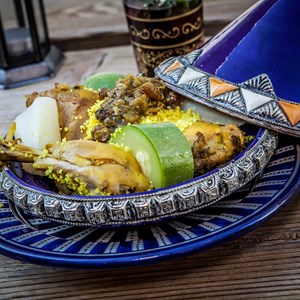 Ramon grosso dolarea / Shutterstock.com
Ramon grosso dolarea / Shutterstock.com
Al Fassia Guéliz
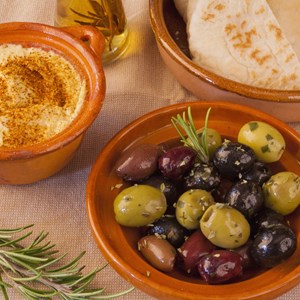 David FR / Shutterstock.com
David FR / Shutterstock.com
Pepe Nero
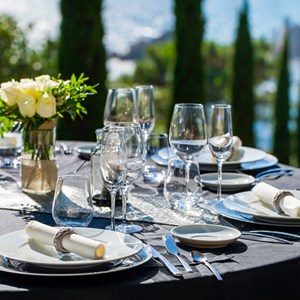 karelnoppe / Shutterstock.com
karelnoppe / Shutterstock.com
Les Jardins de la Medina
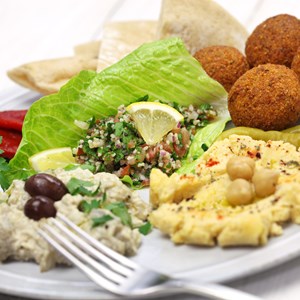 bonchan / Shutterstock.com
bonchan / Shutterstock.com
Azar
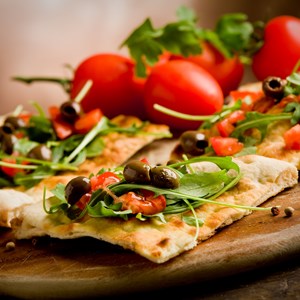 Francesco83 / Shutterstock.com
Francesco83 / Shutterstock.com
Limoni
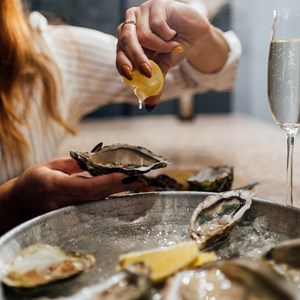 Tyshchenko Photography/Shutterstock.com
Tyshchenko Photography/Shutterstock.com
Bagatelle
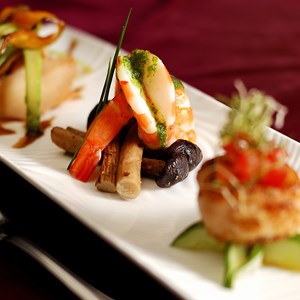 ytyoung / Shutterstock.com
ytyoung / Shutterstock.com
The Restaurant of La Sultana
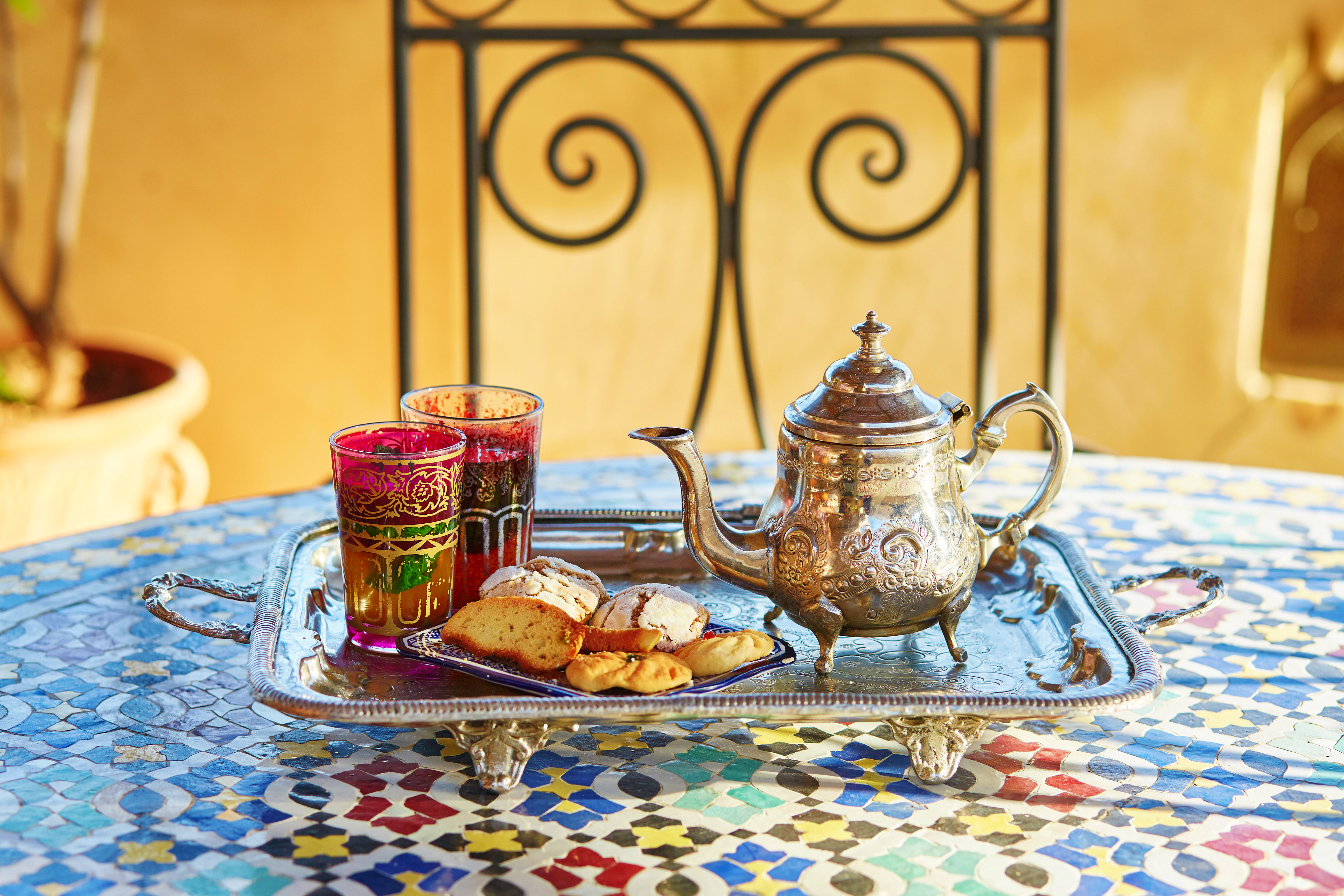 Ekaterina Pokrovsky/Shutterstock.com
Ekaterina Pokrovsky/Shutterstock.com
Cafés
Enjoy the different sounds and views in Marrakesh at a nice café with a cup of strong Moroccan coffee in your hand. Moroccans also have a liking for sweet things, so be sure to try out their desserts and pastries, washed down with an aromatic glass of "thé à la menthe" or mint tea.
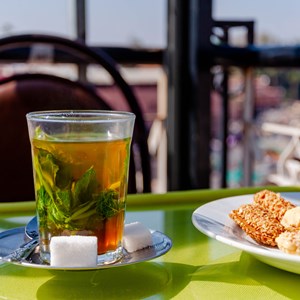 Valerio brignola/Shutterstock.com
Valerio brignola/Shutterstock.com
Café de France
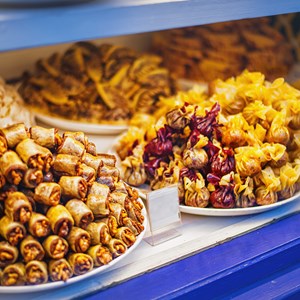 Alewtincka/Shutterstock.com
Alewtincka/Shutterstock.com
Patisserie des Princes
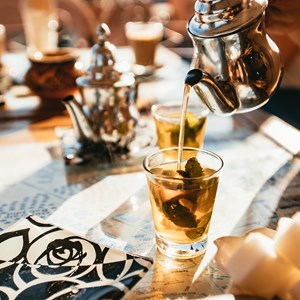 sebastiancaptures/Shutterstock.com
sebastiancaptures/Shutterstock.com
Dar Cherifa
 apolonia / Shutterstock.com
apolonia / Shutterstock.com
Café du Livre
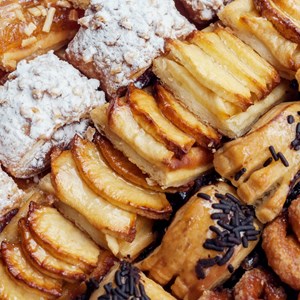 karnavalfoto / Shutterstock.com
karnavalfoto / Shutterstock.com
Pâtisserie Amandine
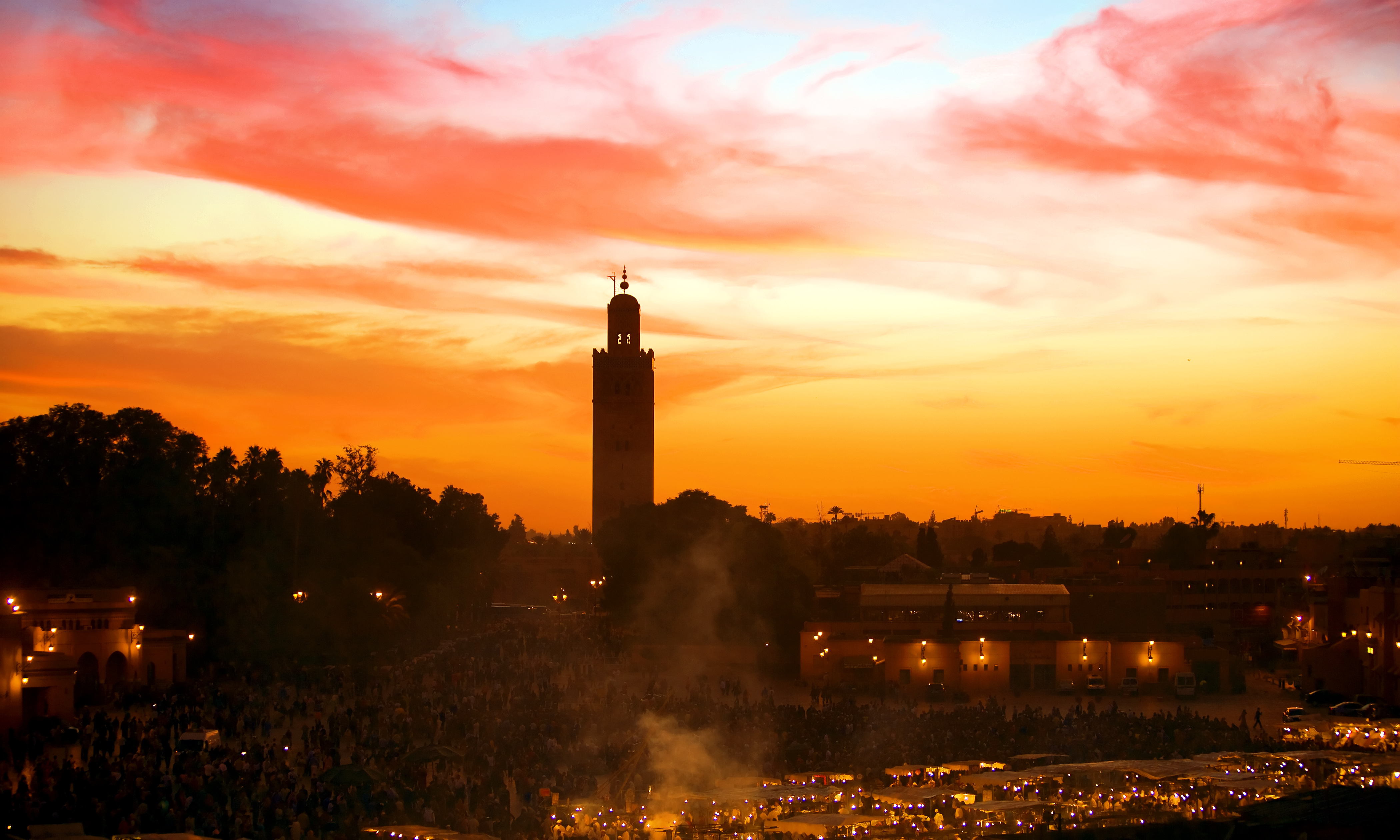 posztos/Shutterstock.com
posztos/Shutterstock.com
Bars & Nightlife
Enjoying a tipple in Marrakesh is a subtle event, unfolding in carefully concealed locales. Yet, once you're on the inside, the atmosphere transforms — expect a lively scene pulsating to the beat of Gnawa music. Located mostly on the city's fringes, these nightspots offer a haven for both locals and tourists eager to embrace the city's vibrant energy. Brace yourself for an unforgettable night of Marrakshi revelry!
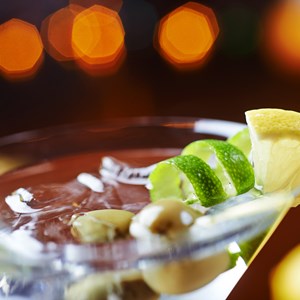 Evgeny Starkov / Shutterstock.com
Evgeny Starkov / Shutterstock.com
Comptoir Darna
 Pressmaster / Shutterstock.com
Pressmaster / Shutterstock.com
Theatro
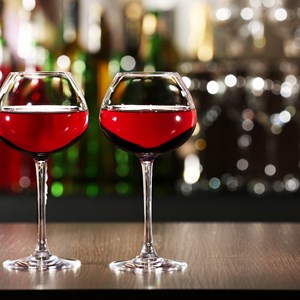 Africa Studio / Shutterstock.com
Africa Studio / Shutterstock.com
Bar Le Churchill in La Mamounia
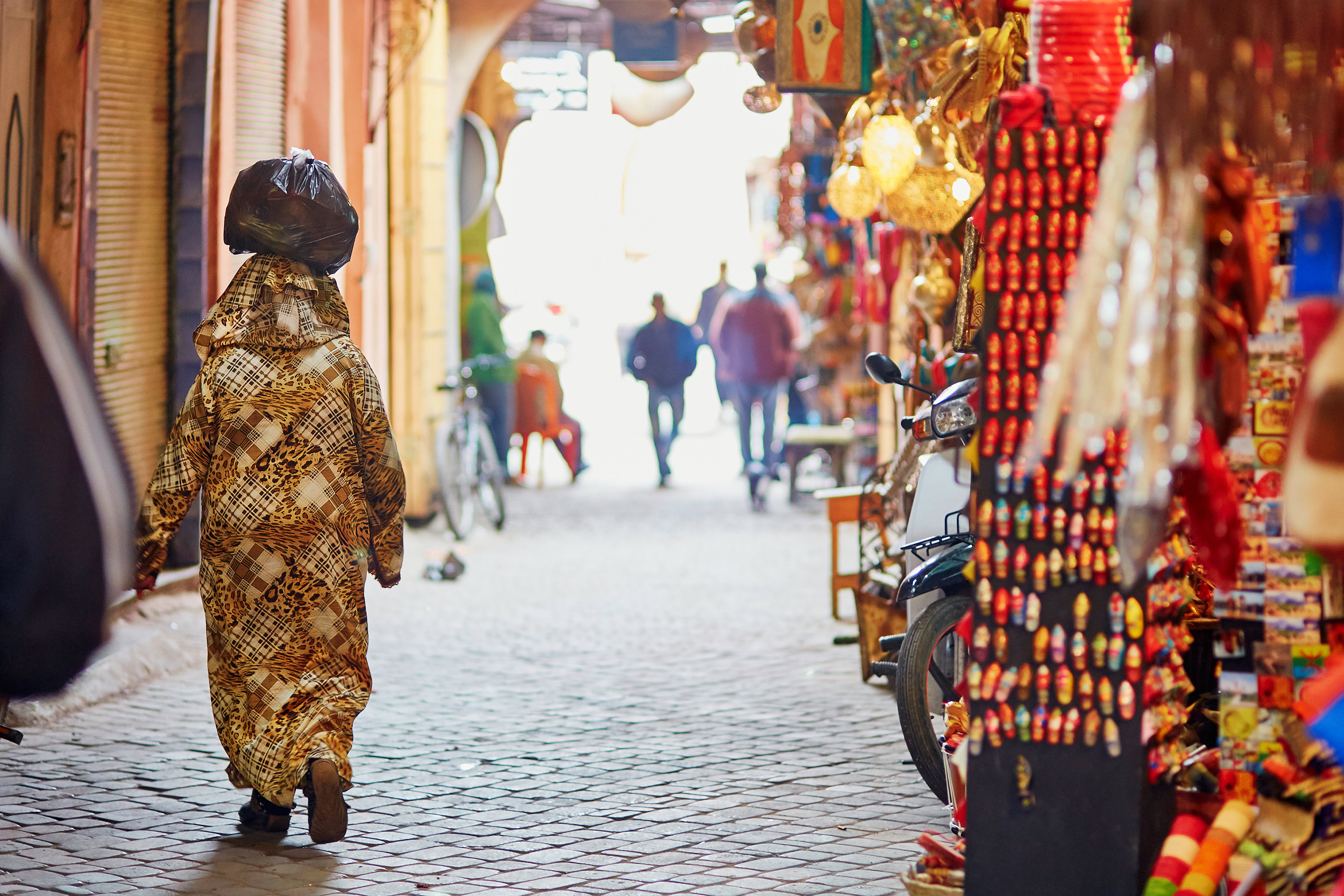 Ekaterina Pokrovsky/Shutterstock.com
Ekaterina Pokrovsky/Shutterstock.com
Shopping
Marrakesh is a shopper’s paradise. It is a place where some of the finest hand crafted goods won’t cost you an arm and a leg and you’re actively expected to bargain. If this sounds like your idea of consumer heaven, then head directly to the souks in the north of the medina, where you will find artisans fashioning all manner of products.
There’s also the slipper market, for that most essential of Moroccan footwear: the babouche, which you can slip into after the night’s revelries. Other markets to look out for include the leather market and the carpet market where you can pick-up high quality hand-woven rugs. For sheer interest alone, and to watch real craftsmen at work, be sure to wander through the markets of blacksmiths, dyers and carpenters. If the bustle of the souk gets to be too much, and you’re all bartered out, then head over to the Ville Nouvelle where the shopping experience comes air conditioned-boutique style. Here you will find exclusive designer wear and one-off original items, artisan and antique shops and warehouse outlets. Happy shopping!
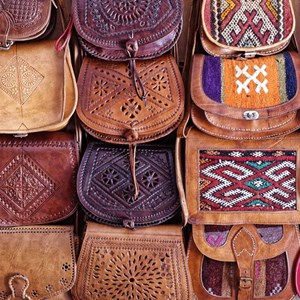 Yavuz Sariyildiz / Shutterstock.com
Yavuz Sariyildiz / Shutterstock.com
Souk El Kebir & Souk Cherratin
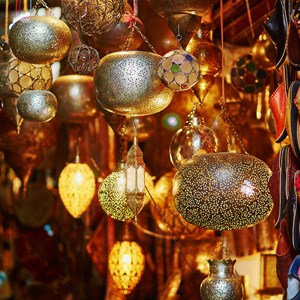 Ekaterina Pokrovsky / Shutterstock.com
Ekaterina Pokrovsky / Shutterstock.com
Ensemble Artisanal
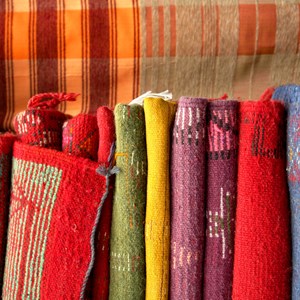 rui vale sousa / Shutterstock.com
rui vale sousa / Shutterstock.com
33 Rue Majorelle
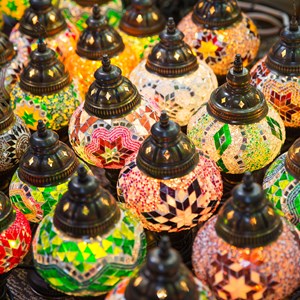 mariakraynova / Shutterstock.com
mariakraynova / Shutterstock.com
Mustapha Blaoui
 Andresr / Shutterstock.com
Andresr / Shutterstock.com
Carre Eden Shopping Center
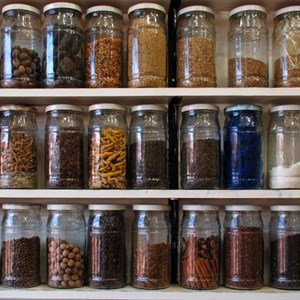 Argentus/Shutterstock.com
Argentus/Shutterstock.com
Herboriste Des Amis
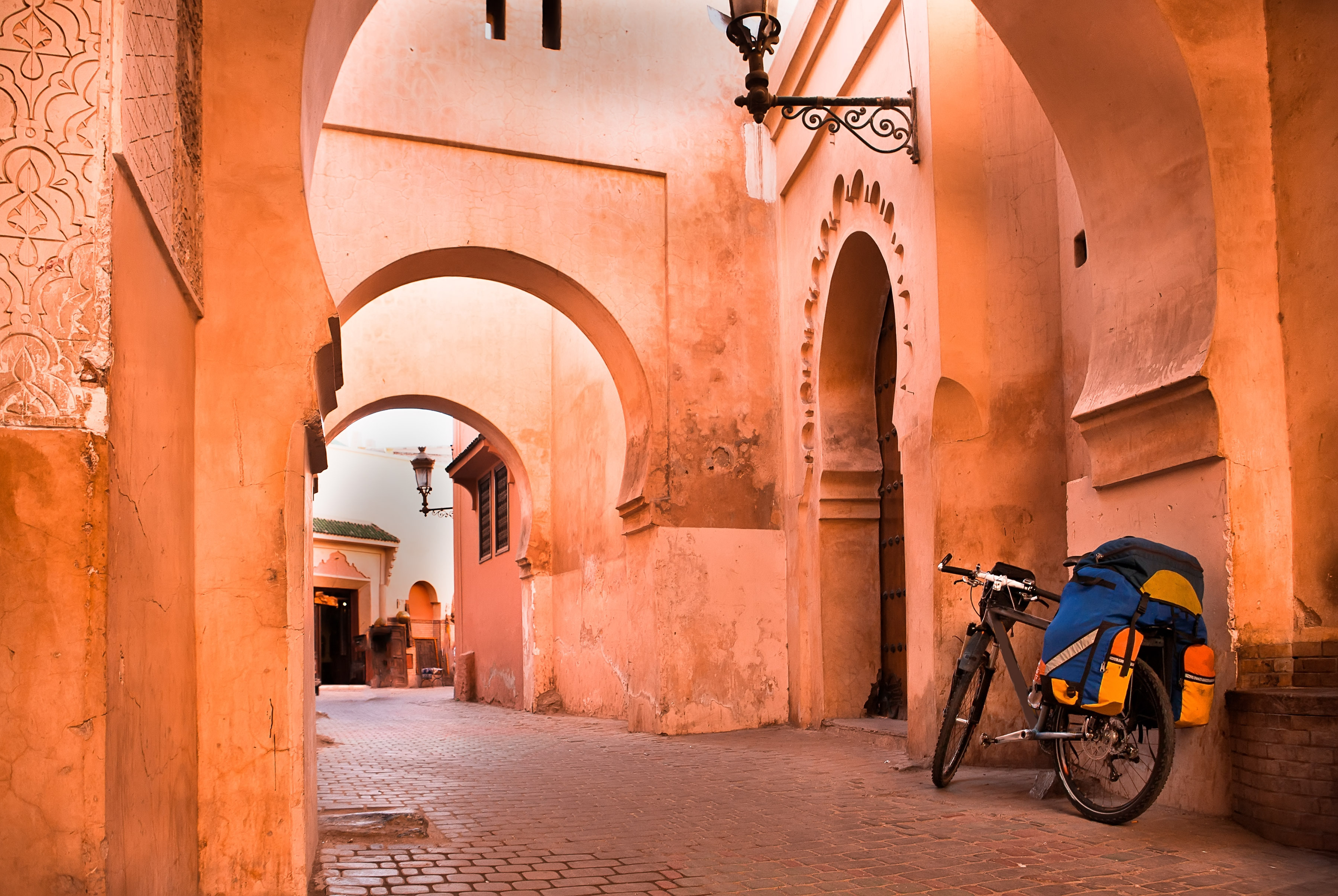 TDway/Shutterstock.com
TDway/Shutterstock.com
Tourist Information
Marrakesh Menara Airport (RAK)
Menara Airport is located 6 km from Marrakesh. Bus number 19 runs to Djemaa el-Fna every 20 minutes during the week and less frequently during weekends and public holidays. The journey takes approximately 30 minutes. A taxi for maximum 5 people plus baggage from the airport to the city centre takes about 20 minutes. Agree on the price before taking off.
Address: Aéroport Marrakech Ménara, Marrakesh
Email:
Phone: +212 5 2444 7910
Website: www.onda.ma/en/Our-Airports/Marrakech-Ménara-Airport
More Information:
Passport / Visa
Citizens of the European Union, as well as the United States, Australia, and dozens of world countries can enter and remain in Morocco visa-free for up to 90 days. Look up individual prerequisites prior to travel in order to possibly apply for visa in time.
Address:
Email:
Phone:
Website: en.wikipedia.org/wiki/Visa_policy_of_Morocco
More Information:
Public Transport
The primary hub for intercity and local buses in Marrakech is Bab Doukkala Station, with most routes stopping at Djemaa El-Fna and Place Youssef Ben Tachfine.
For train travel, head to the Marrakech Train Station. Established in 1923 during the French protectorate era, the original station was situated on Hasan II Avenue and functioned as the rail network's terminus. A new, larger station was unveiled in 2008, just adjacent to the old one and closer to the city centre. Designed to accommodate future rail extensions to Agadir and Laayoune, the modern station also offers shopping and dining options.
Direct trains run daily to Fez via Casablanca Voyageurs, with two more direct connections to Tangier. Transfers for Oujda and Mohammed V International Airport are also available, and additional routes to Tangier can be accessed with a change in Casablanca.
Address:
Email:
Phone:
Website: www.alsa.ma
More Information:
Taxis
Taxi is the favoured method of transport around Marrakesh. There are small taxis (petits taxis) which can take up to three passengers. For destinations further afield, there are large taxis (grands taxis). Prices are reasonable but should be agreed in advance.
Address:
Email:
Phone:
Website:
More Information:
Post
You can buy stamps in several shops around the medina and also in some of the most upscale hotels. The main Post Office in the city is located at Place du 16 Novembre.
Address: Poste Centrale, Place du 16 Novembre, Gueliz, Marrakesh
Email:
Phone:
Website:
More Information:
Pharmacy
You don't have to go far to find a pharmacy since there are a lot of them in the city, particularly in the area of avenue Mohammed V between Place Abdelmoumen Ben Ali and Place de la Liberté. A sign in the window indicates which pharmacies are open after-hours.
Address: Pharmacie El Filali, Rue Khalid ben el-Oualid, Marrakesh
Email:
Phone: +212 5244 32700
Website:
More Information:
Telephone
Country code: +212
Area code: 052
Address:
Email:
Phone:
Website:
More Information:
Electricity
In Morocco, you will encounter two types of electrical outlets: Type C and Type E, both with round prongs. The country's electrical system runs on a 220V supply voltage and a frequency of 50Hz. Make sure to bring appropriate adaptors if your devices are not compatible with these specifications.
Address:
Email:
Phone:
Website:
More Information:


